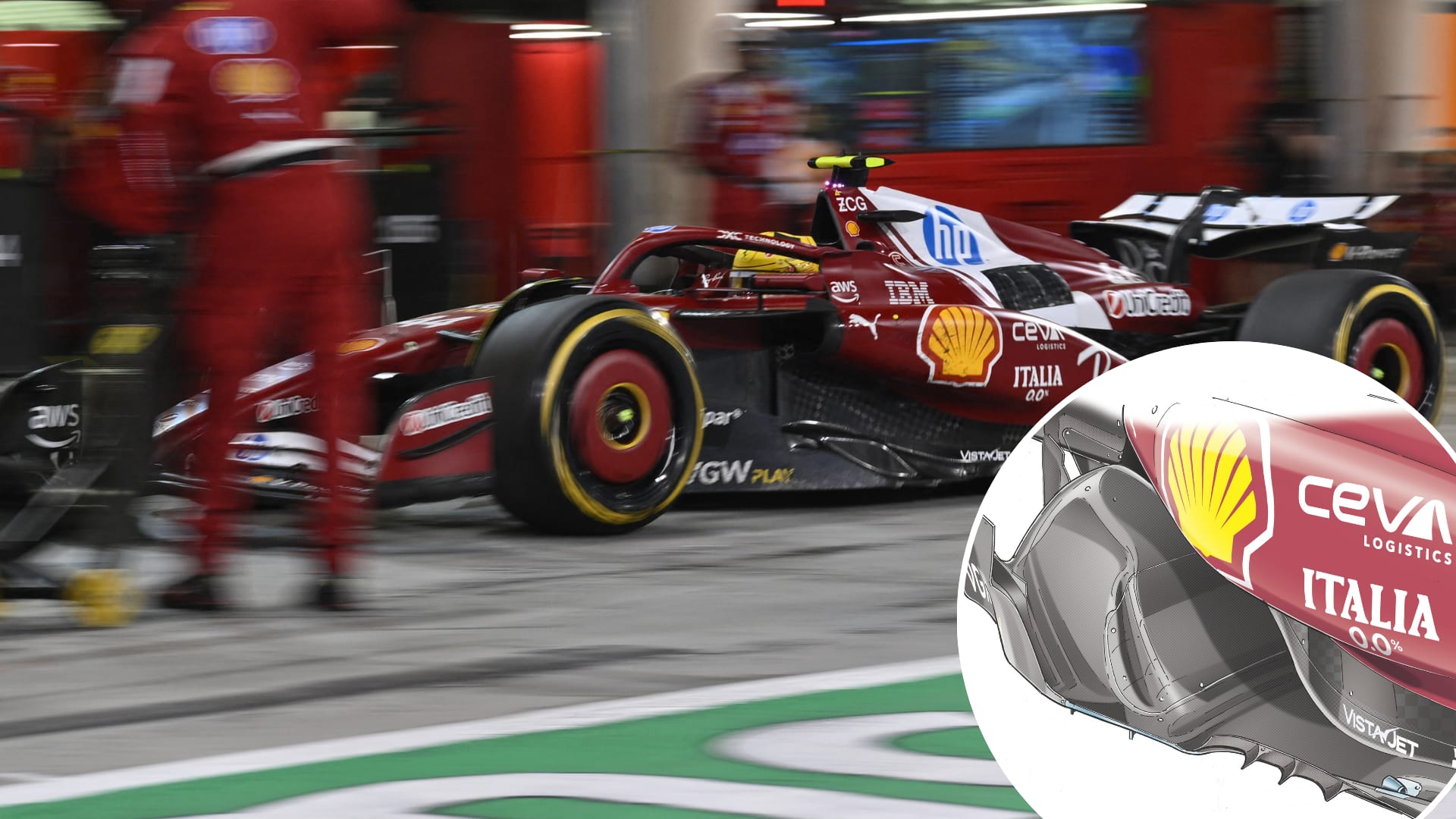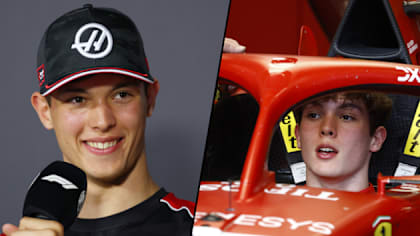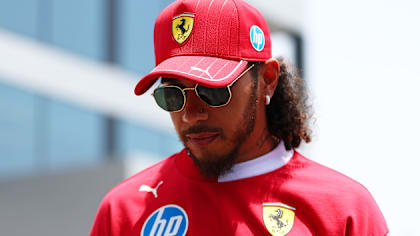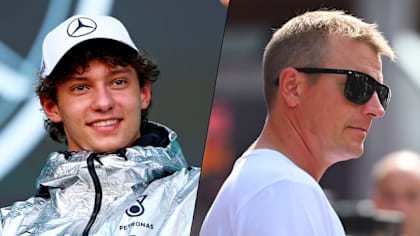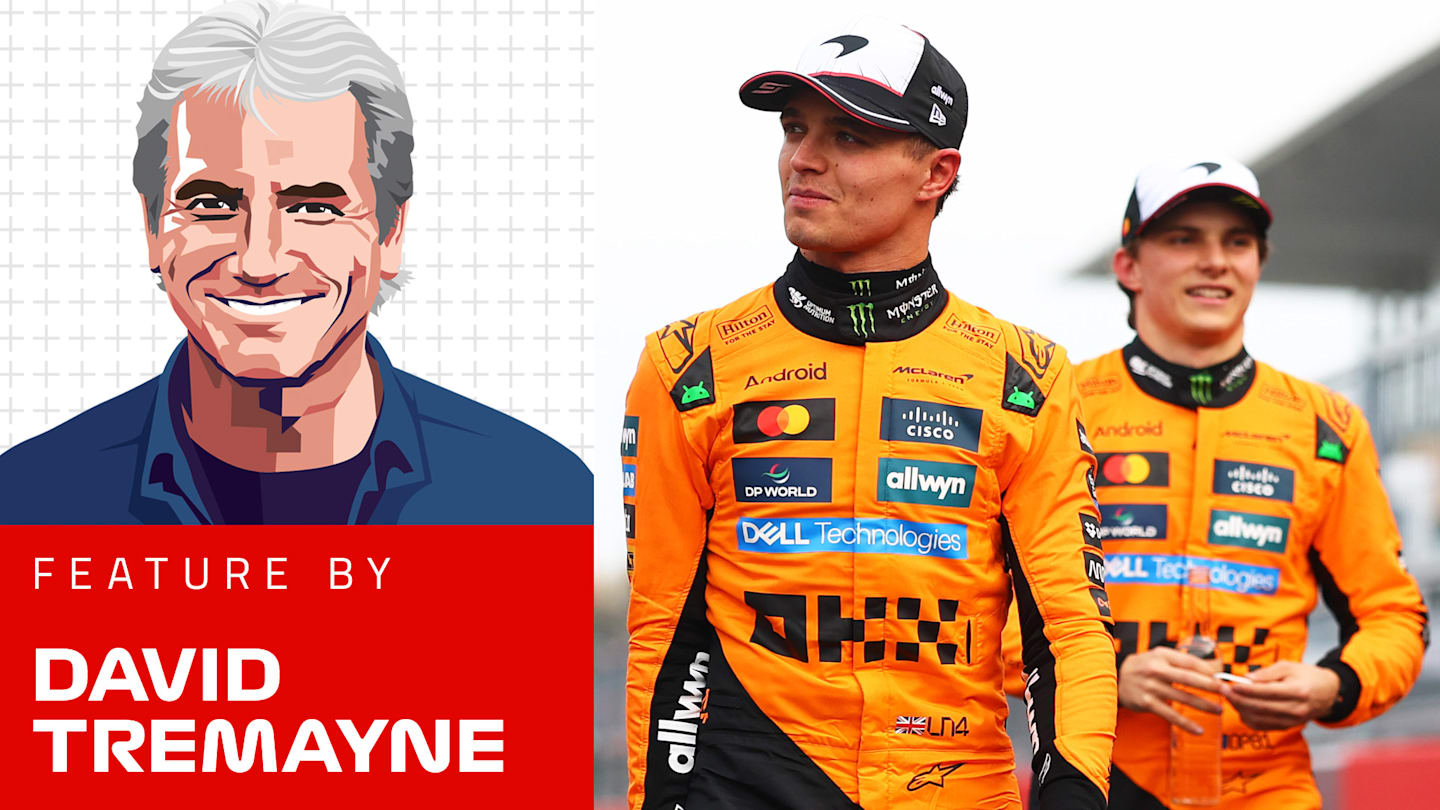
Feature
TREMAYNE: McLaren’s impressive pace in 2025 means they could soon be facing an age-old F1 problem
Share

In many ways it’s a nice problem for any F1 team to have: two very quick drivers, either of whom can win you the race. Ideally, they bring you a 1-2. But if one stumbles, the other can pick up the pieces. But the trouble starts when they stumble over one another.
In Bahrain in 2014, the first year of the first turbo-hybrid formula, the race was characterised by a breathtaking battle between Mercedes team-mates Lewis Hamilton and Nico Rosberg.
READ MORE: 6 Winners and 6 Losers from Japan – Who tasted success at Suzuka?
It got very feisty when Hamilton was under pressure on harder tyres than Rosberg after a final Safety Car, but he hung on to win. The duel had everyone on their toes, not least Mercedes boss Toto Wolff. But despite continual anxiety he maintained the moxie to let them race.
Fast forward to 2025… Does that remind you of anyone? Perhaps two very hungry young racers who each have clear potential to be world champion, and who drive papaya orange cars?
Bahrain 2014: Onboard as Hamilton and Rosberg's battle lights up Sakhir
Of course, since he is the only man in the same car, your team mate is always the first one you have to beat. And a few times last year there was great tension, and already twice this the situation has caused misunderstandings.
In Australia many felt McLaren should not have stopped Oscar Piastri’s bold pursuit as he appeared to be closing rapidly on Lando Norris. Every time Lando set a new fastest lap, Oscar would beat it. But just as they seemed about to engage, the order went out under what they call ‘Papaya Rules’: hold positions.
Part of the ensuing misunderstanding arose because what McLaren actually meant – but the world outside couldn’t know – was: stay as you are until you lap the two Haas cars, which were going slowly on a damp track said to have only one line.
And because McLaren thought Norris had tyres left whereas Piastri was wearing his more in his pursuit, partly because of running in his team mate’s dirty air.
Then, last Sunday at Suzuka, Oscar again seemed faster in the closing laps as they vainly pursued Max Verstappen’s leading Red Bull. He radioed a request to be allowed to pass Lando and have a go at the world champion, but was told that while he was within DRS reach of his team mate, Lando was deliberately conserving his rubber for one final big push, hence (to an extent) why Oscar was closing on him.
In that sort of situation Oscar acknowledged that when you have qualified behind your team mate, unless he’s limping on hands and knees, it’s not really on to ask to be allowed to pass. He said as much afterwards.

Piastri followed Norris home in Suzuka – but the Aussie felt he was faster than his team mate
Managing team mates is a problem as old as racing itself. Vanwall in the late 1950s with Stirling Moss, or Ferrari when Michael Schumacher was in his pomp in the late Nineties, bypassed it altogether. Vanwall owner Tony Vandervell insisted Moss was number one, and Ferrari likewise did the same with Schumacher.
Thus Stirling, the most outstanding driver since Juan Manuel Fangio had retired, was allowed to select whichever combination of chassis, engine and gearbox he wanted after practice, leaving the equally fast Tony Brooks with second choices and promising rookie Stuart Lewis-Evans with whatever was left. And since reliability was much less impressive back then, things often evened out.
READ MORE: The king that was never crowned - Sir Stirling Moss remembered
Ferrari made it even more clear-cut by insisting the number two driver played second fiddle to their German icon. Thus Eddie Irvine and Rubens Barrichello knew their place, and that they were required to ride shotgun not challenge their team leader.
Never was that more cruelly illustrated than in Austria in 2002 when Rubens genuinely had Michael covered but was nevertheless required to surrender the victory to him, which he did – very obviously – at the last possible moment. Michael was booed on the podium, where he looked suitably embarrassed, and collectively the miscreants were fined $1m by the FIA.
Austria Classic Moments - 2002 Schumacher Barrichello
The reverse of that was at Monza in 1956, when Fangio had to retire his Ferrari and could not thus cinch his fourth championship. But back then cars could be shared. His team mates Luigi Musso and Eugenio Castellotti, fighting an intra-team battle to be the best Italian, flatly refused to hand over theirs, but Peter Collins offered his.
Fangio finished second and the points he shared with Collins clinched his title. He praised the dashing Englishman’s sportsmanship, but Peter simply suggested that he had plenty of time left to win the title himself; sadly he was killed in the German GP two years later…
When Ronnie Peterson returned to Lotus for 1978 as the prodigal son, having left at the end of 1975, it was on the understanding that Mario Andretti, who had done all the development work on the previous year’s innovative ground effect Lotus 78 and the new 79, would get first dibs.
Ronnie was often faster, but always obeyed that diktat. In the end Mario, a hard and honourable racer himself, agreed with the man they called SuperSwede that the rule would stand until after the Italian GP, after which they would race. Sadly, as Mario clinched his deserved title at Monza, Ronnie succumbed in hospital to injuries in a crash at the start of the race.
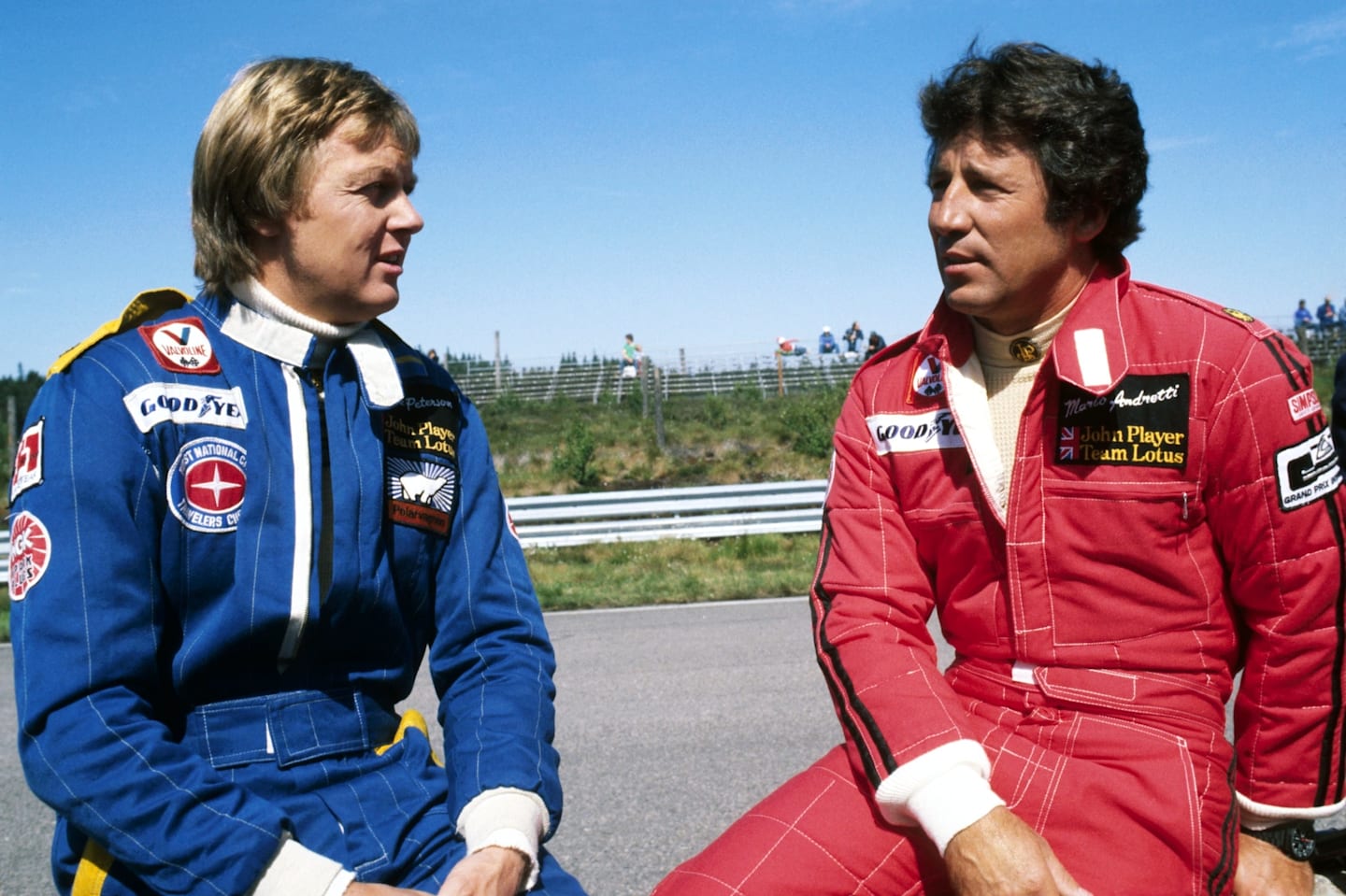
Ronnie Peterson and his team mate Mario Andretti worked out a deal between themselves at Lotus in 1978
In 1986, when Nelson Piquet had gone to Frank Williams to complain that Nigel Mansell was too quick and should, as the number two driver, be reined in, Frank was deeply unimpressed. He was a racer who liked his drivers to fight it out.
In 1988 Alain Prost showed great confidence raising no objection to having Ayrton Senna as his team mate chez McLaren. And despite all the ensuing dramas and acrimony that subsequently ensued between the Frenchman and the Brazilian, Ron Dennis bravely allowed them to race, so long as they didn’t collide…
READ MORE: Prost vs Senna – The top 10 moments of F1's defining rivalry
Two decades later he did the same when Fernando Alonso joined as the team’s star, with a rookie called Lewis Hamilton as his team mate.
Both times McLaren paid a high price for being honourable and having two bulls in the same field, but the racing was undeniably fantastic and great for the sport, if not always for the team.
Toto Wolff’s ‘let them race’ philosophy worked most of the time, though memorably not in Spain in 2016 when Lewis and Nico were threatened with the sack after they took each other out soon after the start…
Rosberg and Hamilton on their 2016 Spanish Grand Prix clash
Red Bull have always deployed team orders when it suited them. Soon after Sebastian Vettel and Mark Webber collided in Turkey in 2010 there was a row over who got the only new front wing at Silverstone.
Mark, another proud and honourable racer, won that race and remarked sarcastically afterwards, “Not bad for a number two driver…” And who could forget Malaysia 2013 and the infamous Multi 21 incident when Seb went unpenalised after refusing to play fair and obey team orders to hand the lead back to him?
Max Verstappen was rarely censured for incidents when the similarly quick Daniel Ricciardo was his partner, not even after he was perceived to have caused the celebrated clash in which both went spectacularly off the road in Azerbaijan in 2018, handing victory to Lewis.
These days Red Bull don’t want equal number ones; after the Liam Lawson and Yuki Tsunoda swap last weekend, it was made clear that Yuki was there to back, not challenge, Max and help with car development.

The tension between Max Verstappen and Daniel Ricciardo came to a head with a crash in Baku in 2018
McLaren will likely have some careful steps to consider. Like Mercedes, they will have to balance two potentially clashing aspirations: to be fair to their drivers and fans, but also to maintain sufficient harmony and prudence to ensure that they don’t jeopardise valuable points in the Teams' Championship, which for any team is arguably more important than the Drivers’ title.
So do they continue to ‘let them race’, subject to Papaya Rules? Or do what Ferrari used to do and choose a point in the season after which the driver with more points becomes the chosen one to fight for the title?
Four races into a 24-race campaign is very early days, but assuming the team can maintain its current performance advantage it’s going to be fascinating to see how this desirable yet delicate situation is played out as the season progresses.
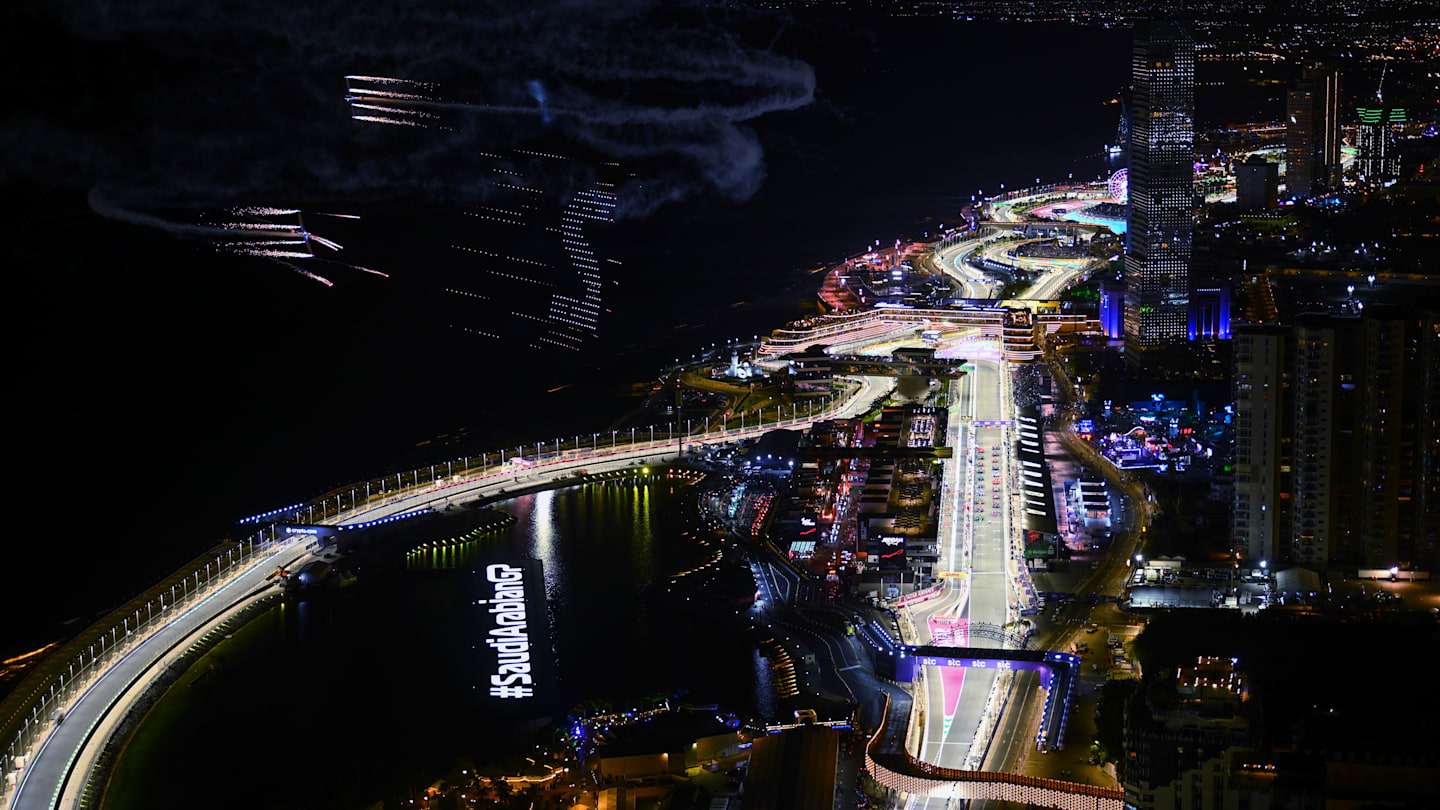
RACE TICKETS - SAUDI ARABIA
Don't miss your chance to experience the fastest street circuit in Formula 1...
YOU MIGHT ALSO LIKE
News ‘This track will always be special to me’ – Bearman reflects on returning to Jeddah one year on from rollercoaster debut
News How to stream the Formula 1 2025 Saudi Arabian Grand Prix on F1 TV Premium
News ‘It’s not impossible’ – Hamilton expands on key area he’s looking to work on to get to grips with Ferrari car
News 'I understood why they call him the Iceman' – Antonelli opens up on experience of meeting namesake Kimi Raikkonen
